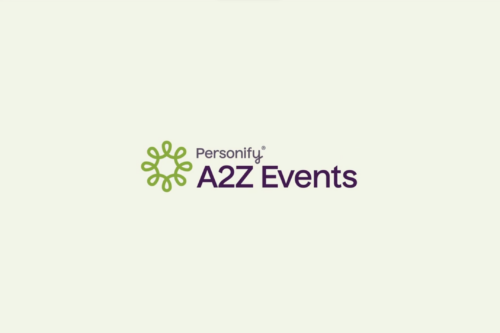You are an event planner. So, of course, your goal is to provide your attendees with an impactful, memorable event. And while that all sounds great, you might be wondering exactly how you should go about doing that. Where do you start and how?
First off, you’ll need a step-by-step guide that will show you where and how to begin. It should also show you what needs to be included, so you don’t leave anything out. Then it should show you how to conclude your event proposal, how to market it, and bring it to life.
That’s what we are going to give you here, along with some effective presentation techniques and other hot tips and tricks that will save you loads of time and money.
What Is an Event Proposal?
An event proposal is an extensive plan that outlines every facet of your event in intricate detail. It should include outlining everything from your objectives to your venue to your budget and everything in between.
What Is the Purpose of an Event Proposal?
Your event proposal should be thought of as an easy-to-view concept you can show your potential clients, shareholders, or anyone else you will be asking for funding.
This is important because you are tasked with persuading potential executives, partners, clients, and prospective sponsors that your event is worthy of their funding and the ROI it will provide them.
The more funding you have, the more elaborate an event (more impactful and memorable) you will be able to provide.
What Should Be Included in an Event Proposal?
It’s important to develop a well-crafted event proposal with intricate details about your proposed event.
Purpose
Come up with a clear purpose for your event. Introduce your event’s brand, its mission, vision, and previous successful events. Include extensive details that let your stakeholders know exactly what to expect.
For example, the date, time, location, number of anticipated participants, planned activities, interactive sessions, event theme (including décor and supplies), menu, external advertising, handouts, prizes, and expected costs.
Audience
It’s important to know your audience when crafting an event proposal because once you know your target audience, you will be able to develop marketing messages that will interest them.
You can start by doing a little market research. Analyze your (and your competitors’) past events and why they were (or weren’t) successful. Explore your audience demographic data (age, gender, occupation, income level, education), study competitor events, and identify gaps and opportunities not covered.
Then take that information and develop an audience persona and a compelling event message to accompany it.
Timeline
Developing a timeline for your event proposal is crucial to the planning and development of your event. An event timeline will ensure that you complete every task associated with your event in a measured manner and without leaving anything out.
You can do this by determining your budget and assembling your event coordination team. Gathering and confirming your speakers, etc. Negotiating your vendor pricing (get everything in writing). Setting a structured timeline with non-negotiable deadlines (but be sure to include some undisclosed buffer time).
Lining up the event software you want to use and including potential “what-ifs” to compensate for any possible delays.
HOT TIP: The five C’s of event planning are Concept, Coordination, Control, Culmination, and Closeout.
Location
The location you choose could make or break your event. Get it wrong and no one will want to come. Get it right and your event will be a memorable success.
When choosing an event location, the most important factor in your decision should be how convenient it is for your attendees. A bad location can severely impact your event attendance rate. Then, check your budget to see how much you have to spend.
Other things to consider are how much parking you’ll need, the capacity and size of the location you’ll need, what services and amenities (wi-fi, sound, acoustics, etc.) you will need, and the venue layout you’ll need for that event. And don’t forget to inquire about any optional or additional services the venue offers or provides.
Event Format
There are a variety of event formats from which you can choose. Those include tradeshows, conferences, expos, workshops, webinars, and corporate and networking events. Each format will have its own advantages and disadvantages depending on its particular objectives and target audiences’ needs.
For example, a conference might give you the ability to showcase many speakers and topics, but that format will also cost you more money, time, and logistics. Whereas a webinar will end up being more cost-effective, convenient, and without any logistics issues.
The best way to determine which event format best fits your situation is to weigh the pros and cons of each. Then select the one that best suits your event’s goals and audience’s expectations.
Marketing and Publicity
You might be able to plan an event, but the planning doesn’t stop there. You must also properly market and publicize it if you want a good turnout and a successful outcome.
Start by setting your event goals. You will use that to build your marketing strategy. Use your main goal as the key metric for a broad marketing approach that actively engages the most people.
Then, you will need to cover a few basics. For example, your entire team needs to be on the same page (date, time, location, etc.), create and follow your event marketing budget, and lastly, consider your lead time.
The amount of time you have before your event needs to be methodically carried out. What marketing channels will you use, what content and messages will you be sending out, and how often?
Plan and implement a content strategy to fill up your event marketing and publicity schedule. You should include social media, blog posts, landing pages, pictures, and/or videos from your previous events, as well as press releases, and testimonials, and consider distributing the interviews you’ve had with your featured speakers.
Don’t forget to include a call to action on everything you put out.
Budget
Your event budget should outline all your expected expenses and any potential revenues. This will help you manage your spending and expectations. It can also be used to show your stakeholders their anticipated ROI while setting the stage for your success.
You can start by defining your goals and objectives. Next, you will create a budget spreadsheet and then estimate your expenses.
You will need to review and revise your budget daily, communicate your budget and negotiate it often, leave room for key considerations and contingencies, and leverage tools, technology, and resources along the way.
And always keep your team and stakeholders in the loop.
Insurance
Lastly, don’t forget to have your general liability insurance provider endorse your event, so you are covered (if you are sponsoring an in-person event).
Should You Use an Event Proposal Template?
Yes, absolutely! Using an event proposal template provides you with a pre-built framework you can use and reuse for every event you sponsor. Having and using an event proposal template means you won’t have to think and re-think about what you need to do to plan all your events properly and effectively.
In addition, if you need an event proposal example, many event management software platforms have loads of tools and resources to help you plan and execute your event flawlessly. Not to mention a professional dedicated staff to help you along the way.
What about a Post-Event Checklist?
Consider using a post-event checklist to help you follow through on your post-event activities such as sending surveys, writing thank-you notes to your clients, etc.
It will also give you some structure for evaluating the success of your event by gathering feedback from your attendees, staff, and vendors. It’s great for gathering and documenting where there is room for improvement and any ideas you have for doing so.
Best Practices for Writing Your Event Proposal
Keep the following best practices in mind when writing your event proposal.
1. Customize Every Proposal
You might be using an event proposal template or have a standard proposal format. However, it’s imperative that every proposal you write is customized and personalized to meet the specific needs and expectations of the client. Never submit a generic proposal.
2. Present a Detailed Timeline
Providing your stakeholders with a detailed timeline will show them that you have thought out every facet of the event planning process. It will also show the client you are experienced, organized, and know what you’re doing.
3. Avoid Industry Jargon and Technical Language
You’re not speaking with other industry event planners. Therefore, you should keep it simple without compromising on the details. It’s also important to present the information in an easy-to-read and digest format.
4. Demonstrate Your Past Successes
Provide the client with testimonials, reviews, and short case studies of your previous events. This will give your company credibility while highlighting your real-world experience. It can also be used to show how you overcame specific challenges and how you achieved the results you’re showcasing.
5. Provide Multiple Points of Contact
Every client will have their own contact preferences. Therefore, it’s best to provide them with all your contact details, such as phone, messaging, SMS, email, or any other method of communication you have. You should also let them know when you are available. This will show that you are committed to their event and will be easy to reach if needed.
6. End on a Positive Note
Conclude your proposal on a positive note by expressing your gratitude for the opportunity and thanking them for their time. Let them know you are looking forward to working with them and helping them make their event plans a reality.
Reviewing and Refining Your Proposal
It’s important to re-confirm the basics, review the content, polish the design, and proofread (preferably multiple times) your event proposal. Then make any necessary adjustments before submitting it to the client.
Getting feedback from your team is another great way to ensure you haven’t overlooked anything, identify any flaws or flow issues, and confirm the timeline. The more eyes reviewing your event proposal, the better.
Bringing Your Event Proposal to Life
Once the client approves your proposal, it’s time to bring it to life. Here are some tips for executing the plans you outlined in your event proposal.
You will simply follow the proposal step-by-step. And you can start by gathering your entire event coordination team to assign and confirm their roles. Make sure you designate an event manager also, so everyone knows who the point person is if they need anything.
Ensure there are no overlapping tasks or duties. Go over the budget with your team and allocate the funds as necessary. You should also ensure that everyone knows exactly what their duties are and let them know they will be held accountable for them.
And lastly, don’t forget to have a backup plan in place for every facet of your proposal just in case something goes awry.
Effective Event Proposal Presentation Techniques
If you will be presenting your event proposal in person, make sure you dress to impress. First impressions are everything! Be mindful of your body language and facial movements, and don’t slouch. Or, if you’re standing, make sure you stand up straight, as this portrays confidence.
Always practice your presentation in front of your team beforehand. Make sure your presentation is clearly written and precise. Also, you will want to make a list of questions and objections you might expect to get and practice addressing them.
You should also practice your redirection skills. If you happen to notice that something you said isn’t to the client’s liking (by watching their facial reactions), make sure you have a redirection plan in place.
You can do this by turning the meeting around and asking the client questions. This will tell you what the client’s preferences are versus what you proposed. Make note of this and amend your proposal as needed.
Bonus Tips and Tricks
Event planning and all its moving parts leave you wide open to issues and challenges. Here are two bonus tips that will help you avoid some of the most common event management challenges.
Bonus Tip #1 – Why Including an Event FAQs Section Is Critical
Attendees are inevitably going to have questions. By including an event FAQs section on your landing page or registration page, you are more likely to generate a better response by answering their questions immediately.
Bonus Tip #2 – Overcoming Event Management Supply Chain Issues
As the pandemic has shown us, supply chain issues can occur at any time, usually when you are least expecting them. Learning how to avoid unexpected supply chain issues is one of the best ways to ensure a flawless event.
Conclusion
Event planning can be rewarding, but only if it’s done right. The best way to ensure a successful event is to have a step-by-step event plan in place and that begins with a properly executed event proposal.
Would You Like Some Help Crafting an Event Proposal?
What if we told you there was a way to craft an event proposal and the entire event planning process in half the time (or less)? It’s possible, but only if you have the right tools and resources to make that happen.
A2Z Events has been a trusted resource for more than 25 years and by thousands of event professionals. Reach out today to book a demo.
We hope you found this event proposal guide helpful. If you have any additional questions or would like another event proposal example, please don’t hesitate to contact us. We would be happy to help!










